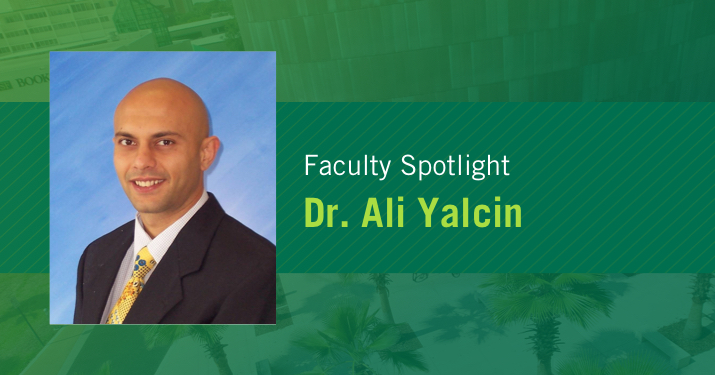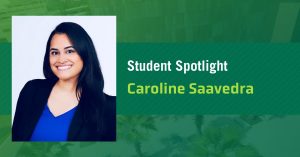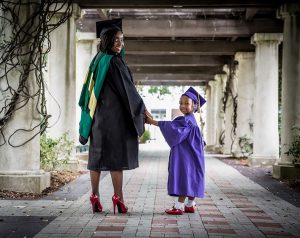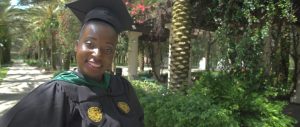Sometimes things just fall into place and take life in directions we can’t imagine. For Dr. Ali Yalcin, that moment came when he was offered the opportunity to co-author a book which would go onto become a seminal work in the field of engineering and a turning point for his career.
The book, titled “Design of Industrial Information Systems,” went on to win the IIE Joint Publishers 2007 Book-of-the-year award. The opportunity to work on it arose from his time as a student at Rutgers University, where he spent nine years as an undergraduate, graduate and doctoral student. While studying information systems in pursuit of his Ph.D., his thesis advisor, Thomas O. Boucher, was working on the textbook and used an early draft in a course Yalcin was taking where he first took an interest in the topic. He shared small corrections and examples as he found them with his advisor. After that collaboration, Yalcin graduated and took a job at USF. One day, Boucher asked if he wanted to add his own expertise to the text.
“Over the course of life, my research took me in the direction of technology and data,” Yalcin says. “This book was about information systems for engineers, databases, how to create forms, how to create interactivity between databases, processes and humans. I was an assistant professor, so writing a textbook was a bit unusual, you’re really supposed to focus on journal publications and grants. But I really got into it and since then, I’ve always done projects focused on this area.”
That passion for data has led Yalcin to take on a variety of interesting projects during his career, whether it was examining process improvement in clinical trials or exploring the online dating habits of older adults. These days, he’s moved into working in the healthcare arena full time, specializing in analytics and data mining, streaming time sensitive data and gleaning insights from it.
He is the co-creator of HomeSense, a remote patient monitoring system that uses an array of commercially available wireless sensors to detect the daily activities and movements of seniors within their homes. Through it, Yalcin has learned some valuable lessons. Chief among them, is to understand the human element of analytics work, taking into account who you are building solutions for.
“If I have one recommendation, that is to listen,” Yalcin says. “Listen to domain experts. If it’s healthcare, listen to healthcare professionals. If it’s older adults, listen to the older adult about what they want. I’ve learned the hard way that you can sit around and build things all you want, but if no one is going to use it, it’s just as good as not building it.”
Yalcin notes that it is almost impossible to know people’s pain points and what they need to address them. Working with older adults and healthcare professionals, he’s come to understand that both populations have very specific needs that are difficult to understand unless you’re involved.
If you don’t listen and try instead to shove what you’ve built down other people’s throats, thinking that is what they need, you might get away with it for a period of time, but it won’t last,” he says. “The best way to understand those needs and build the right product, the right interface, is to just listen.”
LISTEN: The Health IT Beat Episode 1 HomeSense
The work of Yalcin and his research partner, Dr. Carla Vandeweerd, has seen them develop HomeSense from a project to a product that in the coming years may be available commercially. It also sparked the formation of the Collaborative for Research & Education in Aging and Technology (C.R.E.A.T.E.) Health Lab at USF, dedicated to the development of solutions that will help the aging and caregiving populations of the future.
“The most staggering statistic is the ratio of caregivers to older adults,” Yalcin says. “The number of people who can care for an older adult was around 5-to-1 in 2000. By 2030, it’s expected to be 3-to-1. What this means for many people, is that when you want care, you may not be able to find anyone to give it to you. So what do we do? There has to be innovation, technology and to a certain degree, automation has to penetrate how we care for our older population if we’re going to do it effectively.
“Remote medicine, ambient sensing, robotics, whatever it is, there will be a need for change that is driven by society and healthcare decision makers. I think technology’s role is to provide solutions, but not drive solutions, going back to that idea of you can’t just build something. I don’t see another way if things go as projected.”
It’s always a privilege to sit down with Dr. Yalcin and talk healthcare data analytics and technology. He’s also the professor of the Healthcare Data Mining and Predictive Analytics course that is part of the master’s and graduate certificate offerings in healthcare analytics. Here is the rest of our Q&A with him.
Q: What has been the most interesting aspect of getting involved with healthcare applications of data analytics for you?
A: The most interesting aspect, or challenge, is working with humans. You always learn something new as you apply a project to different people. With HomeSense, you put the sensors in one home and then another and they have completely different questions, expectations and requirements. It never gets dull. You can design and manufacture 100 of the same machine or system, more or less it works the same across all 100. But it isn’t that way with humans and healthcare.
I think we’re at a point from a software perspective that if you can imagine it, someone can build it. Technology is almost never a problem in my domain. It’s always whether it’s a solution to a problem. If someone asked me, what it would take to predict a hospital visit or a fall, I would say that the technology exists to do it, but we don’t know exactly what we need to look at or know to do that.
Q: You mentioned HomeSense there. That system and its ability to collect data is very impressive, but obviously the analysis of that data is just as important. What value could this sort of data provide students in learning how to analyze larger data sets to glean actionable information?
A: It starts with “flying blind”. What I mean is, you put these sensors into someone’s house and you close the door. Sensors just start sending numbers to you. In an application like this you have to plan ahead and plan for everything you can think of. Once you close the door, that’s it, you’re not going to be able to get back in and check on it until you can really justify intruding on the person’s schedule and personal life. It is very different than putting sensors in an empty house where you can come and go as you please and adjust things. If a participant decides to hang a towel on one of the sensors, well…there is not much you can do about it in the short-term.
The part that students never get to see in traditional data analytics courses is data collection. Most of the time, you’re given a link and there is the data. Here, you can write algorithms around this data, and be able to sift through the noise to ensure the quality of your data, and then work toward predicting events, validating algorithms and so on. You know the data from a single sensor is probably not that valuable, but if you put them all together, now you can actually do detection for meaningful events. All of that represents experience students can get working on a project like this.
Q: What are some of the things that have developed that you didn’t expect from the HomeSense project?
A: I’ve been working on something cool. It’s a single sensor that measures power usage throughout the entire house. I have a smart switch that can tell me the profile of the common electrical devices in my house and I think soon enough I will be able to tell you which devices are on or off in my house just by looking at that overall power usage ~ down to the coffee pot, the toaster, they all have a unique signature.
This has a healthcare application because if you want to understand things like activities of daily living or hygiene, this can tell you about a person’s life. How many times you run your washer or dishwasher relates to your hygiene. Same with electrical water heaters, one primary use of which is showers. We have other ways to measure showers, but this is just another way to validate and avoid missing data due to a problem with a sensor. We have a house right now that hasn’t been sending data and we can’t get in there because the person doesn’t feel well. That’s a perfect example of where that single sensor could help fill some of the gaps.
Q: Do you see the work branching into other areas?
A: Because we have intentions of HomeSense becoming a commercially available product, there are a lot of visionary people interested in getting involved and some of them have very interesting ideas. I would like to find a benevolent donor to help us put this system into a thousand homes for 3-5 years, so that we have a meaningful size dataset of aging in place information. How does behavior change and what are the signs and symptoms that lead to either them going to an assisted living facility or not being able to age in place anymore?
It’s obviously different for a lot of people, but what are the commonalities across populations? The thing about a dataset like this that it could be the basis for developing effective services for aging in place and policies that support the bigger vision of helping older adults do this. I think that’s the future for HomeSense. We’re getting to a time where it needs to spread its wings and take off.
Q: You’ve also done research concerning online dating as it pertains to older adults. Can you tell us what led you toward that particular topic and what story data can tell us about that population’s experience with online dating?
A: That was a very interesting project. I’d just wrapped up a period working as associate dean of the College of Sustainability when Carla looked me up and presented this idea of looking into online dating and older adults as it relates to violence and abuse. She needed an interdisciplinary team to apply for $100k grant, so we wrote up a proposal and spent about a year looking at online profiles of older adults and abstracting them.
Let’s just say I’ve seen some interesting websites; but I learned so much terminology associated with qualitative research. Up until then I was always a numbers guy, numbers mattered and nothing else did. Numbers do matter, but there are other things that matter and that project made it very clear to me that you can have qualitative data that allows you to start quantifying things about a certain topic or population.
What took me by surprise was that the amount of people who prey on older adults. There are a ton of scammers. And when you think of unwanted advances toward a woman, you might think of young guys at a local night club, but it happens with older adults online. There’s no getting away from it and a lot of these advances are quite vulgar in nature. Things you would expect someone to be very hesitant saying to another person. I thought the amount of unwanted things happening online was just as prevalent as you’d find in the local nightlife.
Q: As an engineer, what developments are you excited to see in healthcare technology? Is there a particular area of research you are paying close attention to aside from what you are working on?
A: Implants are definitely interesting. I don’t know how far they’ve progressed, but I think it’s only a question of time until technology implants are a part of daily life. I personally don’t like carrying anything around, so if it can just ride inside me, no problem. At that point we will start talking about Internet of Human Things and not just internet of things.



